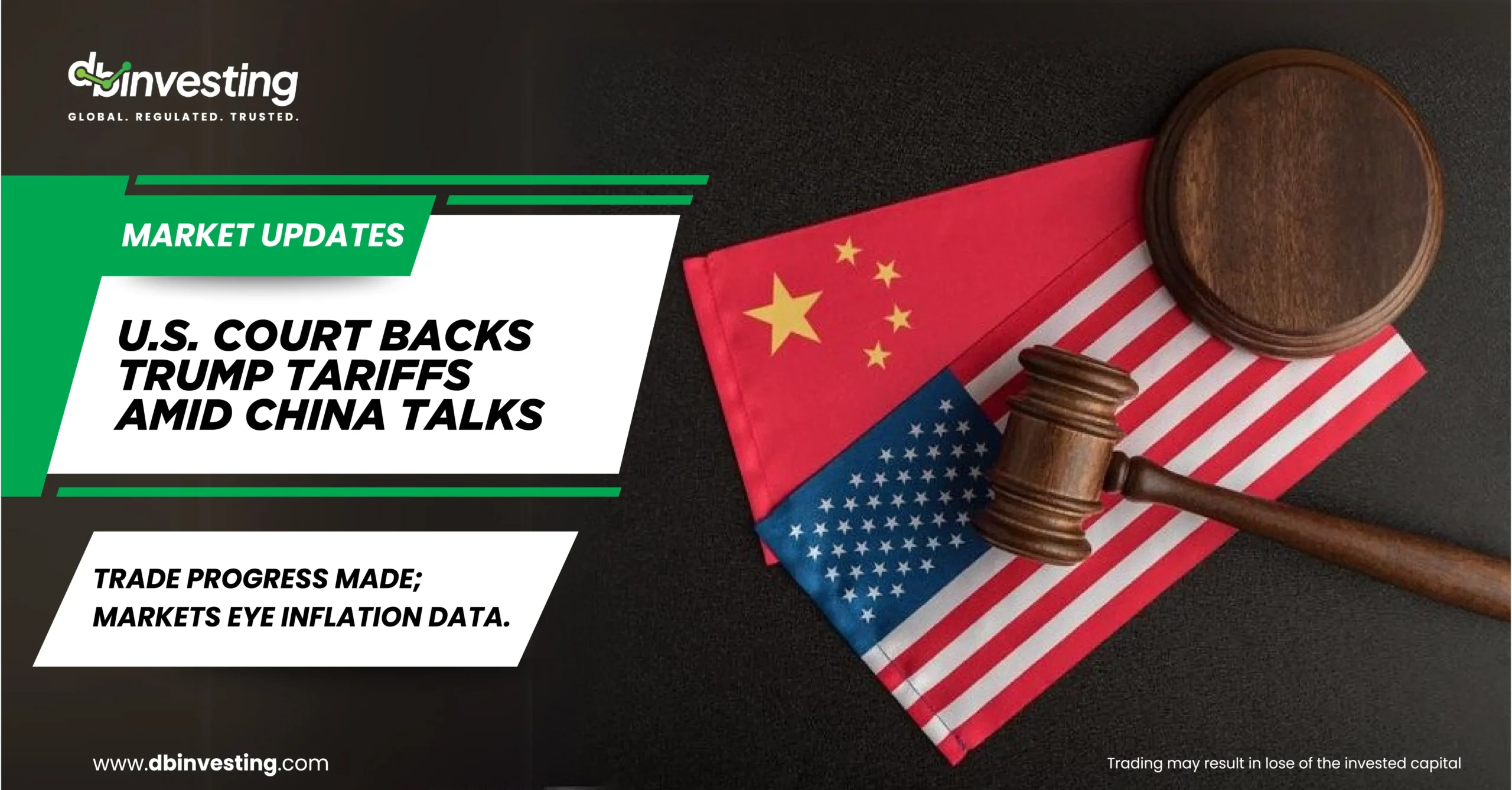Trade progress made; markets eye inflation data.
U.S. Legal & Political Developments
- A federal appeals court ruled that former President Donald Trump’s trade tariffs can remain in effect for now.
- The court extended a previous short-term allowance after the White House appealed a trade court’s decision that halted the tariffs.
- The ruling acknowledged U.S. officials’ trade concerns outweighed potential economic harm, despite objections from small businesses.
U.S.–China Trade Negotiations
- U.S. and Chinese officials reached a framework agreement in London after two days of high-level talks.
- The discussions focused on rare earth metals and chip export restrictions.
- U.S. Commerce Secretary Howard Lutnick confirmed a willingness to ease export restrictions if China resumes rare earth exports.
- Optimism grew after a phone call between Trump and Chinese President Xi Jinping.
- Chinese Vice Minister of Commerce Li Changang indicated that the framework will be submitted to Xi for approval.
Economic Outlook & CPI Data
- All eyes now turn to the upcoming U.S. Consumer Price Index (CPI) data, due Wednesday.
- Expectations suggest a slight rise in inflation for May, continuing trends from earlier in 2025.
- Tariffs have contributed to price pressures, affecting consumer prices.
- A strong dollar and uncertain inflation trajectory may influence the Federal Reserve’s stance on interest rates.
Conclusion:
This week marked key developments in U.S. trade policy and economic outlook. Trump’s tariff strategy received legal backing, while cautious optimism emerged in U.S.–China trade negotiations. Meanwhile, CPI data remains a critical piece in the economic puzzle for markets and policymakers alike.
